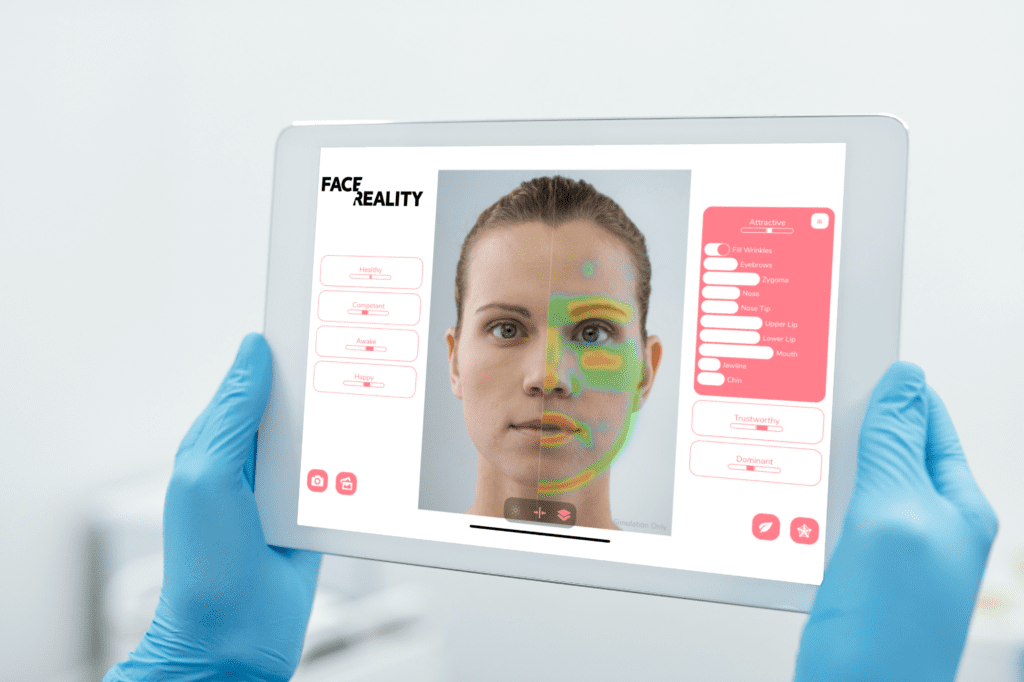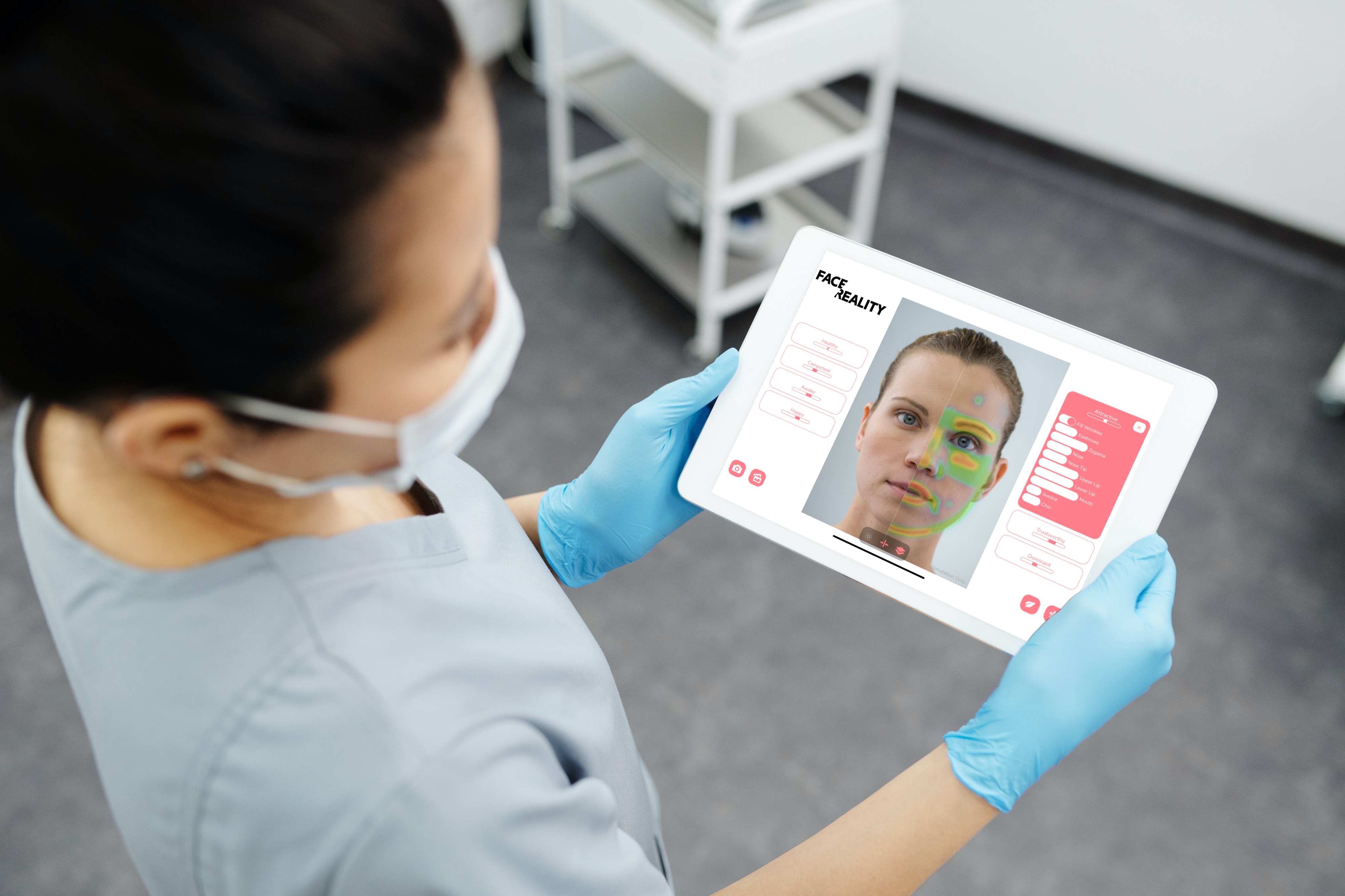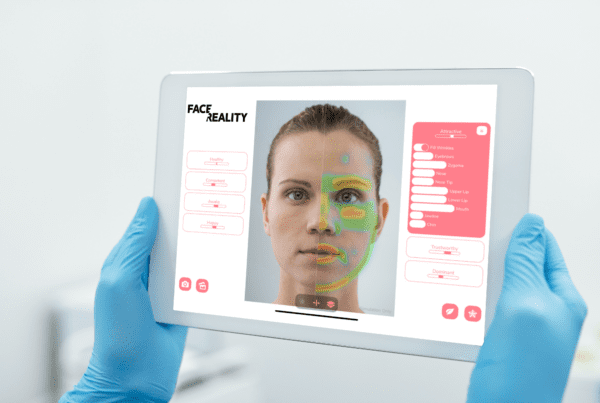Aesthetic practitioners are constantly seeking innovative tools to enhance their services and provide the best possible experience for their patients. Simulation software has emerged as an invaluable resource for aesthetic practitioners, offering the ability to visualize and assess potential outcomes before treatment. In this article, we will compare some of the top simulation tools for aesthetic practitioners. FaceReveal, Crisalix, and QuantifiCare are some of the most popular aesthetic treatment simulation tools.
FaceReveal: Elevating Aesthetic Consultations with Realistic Treatment Simulations.

The treatment simulation tool FaceReveal is taking the aesthetic world by storm with its cutting-edge technology. It leverages AI for accurate facial analyses and offers automatic recommendations for minimally invasive treatments. FaceReveal goes beyond the superficial and provides practitioners and patients with insights into their first impressions such as attractive, healthy, competent and more. This powerful tool guides patients towards subtle, natural enhancements that align with their unique features.
Crisalix: The 3D Augmented Reality Experience & Treatment Simulations

Crisalix offers 3D augmented reality simulations. With Crisalix, patients can see themselves in 3D, offering a preview of the potential outcomes. The platform enables practitioners to create simulations to help their patient’s decide on a treatment.
However, FaceReveal uses AI and data-driven insights, creating a more balanced choice for practitioners who want a holistic, full-face approach to aesthetic treatments.
QuantifiCare: Advanced 3D Imaging & Treatment Simulation Tool
Practitioners can use the QuantifiCare Camera systems to capture high-quality 3D images of their patients, providing a detailed view of their features. Also, the software allows for accurate measurements and simulations to assess the potential outcomes of treatments, aiding in both the decision-making process and post-treatment evaluations.
However, FaceReveal’s data-driven approach ensures that practitioners can make recommendations based on quantifiable data, enhancing both the consultation process and post-treatment evaluations, without the need for expensive hardware.
Other Free-hand Aesthetic Treatment Simulation Tools
Tools that offer free-hand simulations can be useful, but there are some associated risks with using these. Apps like Aedit or BeautyFix allow users to edit faces and show potential results, practically without limit.
While this may be useful to find out your patient’s goals, there is a risk of setting unrealistic or exaggerated expectations. Especially when it comes to areas such as the nose or jawline, the results that can be achieved with minimally invasive treatments are limited, so larger edit of the face while using these tools can lead to dissatisfied patients.
FaceReveal’s algorithms have been trained by seasoned professionals, as well as millions of human opinions. FaceReveal recommends optimal treatments that are realistically achievable with minimally invasive methods.
The advantages of using FaceReveal as a simulation tool
FaceReveal’s innovative approach sets it apart as a simulation tool for aesthetic practitioners. It employs AI for facial analysis based on an individual’s unique features, providing practitioners with objective, data-driven insights. What makes FaceReveal the best choice?
- Objective Insights: FaceReveal not only allows practitioners to create visual simulations but also quantifies the first impressions patients make based on their unique facial features. This data-driven approach sets the gold standard for aesthetic assessments.
- Subtle, Natural Enhancements: FaceReveal’s simulations guide patients towards subtle and natural enhancements, ensuring their appearance aligns with their individual features. This focus on natural beauty is a hallmark of FaceReveal’s approach.
- Comprehensive Analysis: Beyond traditional beauty metrics, FaceReveal assesses attributes like attractive, competent, trustworthy, heathy and more. This provides a more holistic perspective, addressing not just physical appearance but the essence of first impressions.
- Minimal Hardware: FaceReveal is a simple and cost-efficient tool. All you need is an iPad to elevate your consultation process.
Conclusion
The choice of a simulation tool ultimately depends on a practitioner’s specific needs and priorities. For example, Crisalix provides an immersive experience, while FaceReveal offers a balanced approach by combining data-driven insights with realistic simulations. QuantifiCare best suits those who require advanced 3D imaging for detailed assessments with specialised hardware. Other Free-hand simulation tools are best for casual use, while FaceReveal uses AI to provide evidence-based recommendations.
Each of these simulation tools has its own unique strengths, making them valuable assets for today’s aesthetic practitioners. However, each has it’s own drawbacks to consider before making a choice. The key to selecting a tool lies in understanding one’s goals, patient needs, and the features that align with one’s practice.



